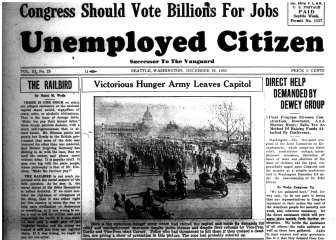 3 Questions. 3 Hints. 3 Answers. Every Tuesday.
3 Questions. 3 Hints. 3 Answers. Every Tuesday.
1. What is being touted as the biggest future job creator?
Hint:

Answer: according to at least one writer, John Tamny, “[r]obots will be the biggest job creators in history.” He claims that “abundant job creation is always and everywhere the happy result of technological advances.” Given the amount of dismal literature published on the topic, a few economic theorists (e.g., Rifkin, Albus, Ford, Brain, Brynjolffson, McAfee, Summers, Spence) would likely disagree as that auspicious claim concerns the future. In fact, there are those who believe robots will more than likely disrupt and destroy jobs and that technological advances may result in unrecoverable mass unemployment. Why? Because this is a time in history when technology is very quickly disrupting many business sectors at once – not just one or two – and workers can’t keep up in terms of skills and demand. This era is not comparable to the instance of “carriage drivers in the 19th century” up against the motor vehicle. Or trains losing ground with the emergence of airplanes. Tamny says that’s OK because robots will create different jobs and opportunities for workers. Maybe. But what do those jobs and opportunities look like? Right now they can only exist in our imagination. Tamny’s claim is that economic growth is anchored in production — not labor. Further, he alleges that the efficiency with which robots will produce and create will result in “a massive surge of investment that will gift us with all sorts of new companies and technological advances that promise the invention of new kinds of work previously unimagined.” Possibly, but many recent entrepreneurial success stories involve fewer, if any, employees compared to the behemoths of the past. While jobs are being created that did not exist in earlier times, labor needs have, for the most part, plummeted or remained unchanged where top companies are concerned. However, production, in today’s world, requires consumers with purchasing power (i.e. an income). It is true that in the future, easily and efficiently mass-produced goods and services could become a free for all, eliminating our cash dependency, and currency could thereby lose its value completely. If money, however, continues to make the world go round, let us hope the future of jobs is as rosy as Tamny seems to believe. It appears Tamny does expect money to continue to be the preferred method of exchange, despite his distinction and reliance on available credit and resulting “investment” creating the future opportunities. However, with the jobs of the future yet-to-be identified, will there be enough of them to secure a stable economy with sufficient investment to keep entrepreneurs, innovation and productivity moving forward? Read Tamny’s piece here.
2. What job is technology slowly destroying that likely won’t be saved by Tamny’s “investment” scheme (see above)?
Hint:

Answer: when it comes to print, media companies are increasingly using algorithms and natural language generators to create news stories. The technology is so good that most readers cannot tell the difference between a piece generated by a human and one spewed out by a smart machine. In a matter of seconds, the latter is able to add a “voice” and other human characteristics to its creation in order to make the outcome appear decisively human. The speed of the accomplishment makes it difficult for a human equivalent to compete against a robo-writer. Journalism, at least where the printed word is concerned, may be the next dying art. Read more here.
3. What marriage proposal surely one-upped yours?
Hint:

Answer: short but sweet. A man recently proposed to his girlfriend via drone. Donning special goggles, the woman was able to view the man’s proposal, etched in sand, filmed 150 feet above the shoreline. Lucky for him she said “yes.” Read the details here.















